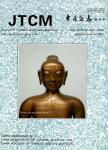Relative exchangeable copper, a high-quality biomarker for differentiation of Traditional Chinese Medicine syndrome in Wilson’s disease
作者机构:Department of Neurology, The First Affiliated Hospital of Anhui University of Traditional Chinese Medicine Department of Clinical Laboratory, the First Affiliated Hospital of Anhui University of Traditional Chinese Medicine
出 版 物:《Journal of Traditional Chinese Medicine》 (中医杂志(英文版))
年 卷 期:2024年
核心收录:
学科分类:1006[医学-中西医结合] 100602[医学-中西医结合临床] 10[医学]
基 金:Supported by National Natural Science Foundation of China Research on the Neuroprotective Mechanism of the Gandouling based on the Regulation of Long Non-coding Ribonucleic Acid Maternally Expressed Gene 3 and Targets Gene Forkhead Box O1 through the Way of Autophagy in Wilson Disease (No. 82104783) National Natural Science Foundation of China Study on Mechanism of Xin’an Medical Gubenpeiyuan Prescription Treating Wilson’s Disease based on Enterohepatic Axis and Enterobrain Axis Pathway (No. U22A20366) National Administration of Traditional Chinese Medicine 2019 Project of Building Evidence Based Practice Capacity for Traditional Chinese Medicine (No. 2019XZZX-NB001) National Natural Science Foundation of Anhui Province Mechanism Study on the Regulation of Peroxisome Proliferator-activated Receptor-gamma Coactivator-1alpha/Sirtuin-3/Mitochondrial Axis to Maintain Hippocampal Synaptic Homeostasis to Improve Cognitive Impairment in Wilson’s Disease by Qingre Lidan JieDu Prescription (No. 2008085MH264) National Natural Science Foundation of Anhui Province Mitofusin 2 Mediates the Role of Endoplasmic Reticulum-MAMs-mitochondria Regulation of Synaptic Homeostasis in Wilson’s Disease Neurons and the Mechanism of Qingre Lidan Jiedu Prescription Intervention (No. 2208085MH271)
摘 要:Objective: To investigate the value of relative exchangeable copper (REC) in diagnosing Wilson’s disease (WD) and to determine its significance in the differentiation of Traditional Chinese Medicine (TCM) syndrome. Methods: A total of 78 patients with WD were recruited on the same day of the medical visit, and among them, 32 were suffering from non-WD (N-WD) and 37 were heterozygous ATP7B carriers (HC) enrolled as controls. Molecular genetic testing was performed for diagnosing WD and HC. Additionally, REC levels in different TCM syndromes were investigated. The correlation between REC and serum ceruloplasmin (Cp), serum copper oxidase (CO), and 24-h urinary copper was analyzed using the Global Assessment Scale and Unified Wilson’s Disease Rating Scale and the significance of REC in WD diagnosis was investigated. Resting-state functional magnetic resonance imaging was used to assess the clinical symptoms of WD and analyze its severity in different TCM syndromes. Results: REC determination helped in significantly distinguishing patients with N-WD or HC from those with WD with a cut-off of 21.15%. Furthermore, the comparative analysis of REC ratios among different TCM syndromes showed markedly high REC levels in the dampness-heat internal accumulation syndrome group. Additionally, the seed-based functional connectivity value from the putamen to the cerebellum was signi?cantly correlated with TCM syndromes. Conclusion: REC level is a high-quality biomarker for diagnosing WD that effectively reflects disease severity and plays an essential role in deciding on treatment strategies and prognosis. Furthermore, REC levels are closely related to TCM syndromes in WD; thus, it is a potential objective quantitative indicator for distinguishing TCM syndromes in WD.



